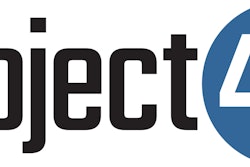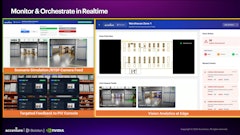
Supply chain visibility is a foundational capability to have when serving today’s informed and on-demand consumer. It can no longer be considered a nice-to-have feature.
Why is visibility such a critical element to today’s supply chain? To be frank, without end-to-end transparency, companies function far less efficiently, and in this market reality, inefficient operations can quickly escalate into closed storefronts and bankruptcy.
The issue is that supply chain visibility is still frequently misunderstood. As a pioneering voice of modern visibility solutions, my aim is to help you understand how to invest your resources in a way that will have the greatest impact on achieving visibility.
Step 1: Define the True Meaning of Supply Chain Visibility
First, let’s define supply chain visibility in the context of today’s environment. As defined by Gartner, it is "a capability that provides controlled access and transparency to accurate, timely and complete plans, events and data within and across organizations and services."
It is about capturing usable supply chain data and freight transactions as information is exchanged between different systems. Therefore, the most important element in achieving true visibility is your architectural setup, or how your company and systems are connected to your business partners and their networks.
Step 2: Understand Technical Roadblocks that Have Historically Limited Supply Chain Visibility
Improving visibility has been a priority for companies for decades with little success. Why?
Most processes for sharing data across supply and transportation networks are managed manually or through email/phone calls, file transfer protocol (FTP), website scraping or point-to-point electronic data interchange (EDI). With these pre-Internet, legacy processes, the exchange of information, along with rules that facilitate the data transfer, are simply not sophisticated enough to create end-to-end visibility. Instead of a true network-centric view, those systems deliver fragmented and out-of-date visibility at best.
Over $5 billion was projected to be invested across supply chain companies last year alone in an effort to solve uncertainties. Those investments may be worthless unless companies create a backbone to overcome the connectivity gaps caused by EDI and legacy systems. Don’t be fooled: Many vendors use pretty user interfaces (UIs) or superfluous applications to distract potential customers from the underlying reality that those vendors aren’t invested in foundational connectivity and modern data transfer systems.
Step 3: Learn How to Create Supply Chain Visibility
Companies should look for solutions that address the connections and building blocks enabling access and transparency to accurate data. Unlike outdated EDI, application programming interfaces (APIs) serve as a modern middleware solution that delivers those most fundamental concepts.
Never assume a single solution can provide end-to-end visibility across all transactions or modes of transportation. True end-to-end visibility expands beyond traditional truckload tracking and requires the entire freight transaction set. To remain competitive, you should have a constant pulse and clear view of the entire spectrum of your supply networks and freight transactions.
By understanding the true meaning of supply chain visibility and moving away from legacy systems via implementing a single API-based network solution, companies can accelerate visibility during transportation, and provide excellent value and service to their end-customers.
Jett McCandless is the CEO of project44.





















